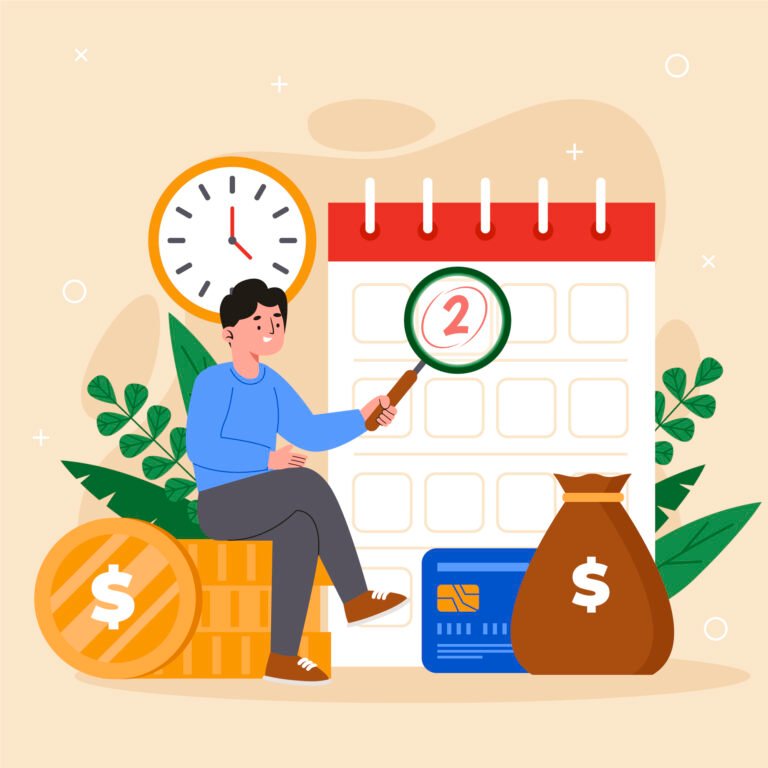1. 💳 The Real Cost of Carrying Credit Card Debt
Interest Rates Are Silent Wealth Killers
Credit cards often come with sky-high interest rates—sometimes 20% or more. That means for every dollar you don’t pay off, you’re being quietly charged extra every single day. It’s not just about what you spent—it’s about what you continue to owe because of that interest piling up in the background.

Table of Contents
Why Minimum Payments Keep You Trapped
Minimum payments are designed to benefit the bank, not you. Paying only the minimum often means you’re just covering interest, with barely any reduction in the principal. This can stretch your debt repayment out for years, even decades, keeping you financially stuck and stressed.
A $5,000 Balance Can Cost You $8,000 (or More)
Let’s say you owe $5,000 at a 20% interest rate and make only minimum payments of around 2% of your balance. You could end up paying over $3,000 in interest—and it might take you more than a decade to pay it off. That original $5,000 could quietly grow into a full $8,000+ out of your pocket. That’s the hidden price of inaction.
2. 🎯 What “Strategic” Really Means
Not Just Paying Randomly—But Paying Smart
Most people just throw extra money at whichever card feels most urgent—or worse, they pay a little extra on all of them. That might feel responsible, but it’s not strategic. A smart payoff strategy focuses your firepower on one target at a time while keeping others in check. This focused approach helps you save time, money, and mental energy.
The Snowball vs. Avalanche Method Explained Simply
Two of the most popular strategies are the Debt Snowball and Debt Avalanche:
- Snowball Method: Pay off your smallest balance first, regardless of interest rate. Quick wins = fast motivation.
- Avalanche Method: Pay off the card with the highest interest rate first, even if the balance is bigger. This saves the most money long-term.
Both work—but your choice depends on whether you’re driven more by motivation or math.
Why Emotional Wins vs. Mathematical Wins Matter
You’re not a robot. If crushing the smallest debt first gives you a psychological boost that keeps you going, the Snowball method might be worth the slight extra cost. On the other hand, if you’re disciplined and want to maximize savings, Avalanche is mathematically superior. The best strategy? The one you’ll actually stick with.
3. 🔥 Debt Avalanche: The Fastest Way to Save
How Targeting High-Interest Cards Works
The Debt Avalanche method focuses on one goal: minimizing how much you lose to interest. You start by making minimum payments on all your cards—except the one with the highest interest rate. That’s where you throw every extra rupee or dollar. Once that card is paid off, you roll that payment into the next highest-interest card, and so on. It’s like knocking down the most expensive dominoes first.
Real Example: Saving $3,000+ by Reordering Payments
Let’s say you have the following debts:
- Card A: $4,000 at 22%
- Card B: $2,500 at 18%
- Card C: $1,000 at 14%
If you just pay them off randomly or evenly, you’ll pay thousands in interest. But using the Avalanche method and aggressively tackling Card A first (because of the 22% rate), you could save over $3,000 in interest over time and pay off your debt months faster—with the same total payment amount each month.
Is Avalanche Right for You?
The Avalanche method is perfect for you if:
- You’re motivated by numbers and logic
- You want to save the most money possible
- You won’t get discouraged if early wins take a bit longer
4. ❄️ Debt Snowball: The Motivational Boost Method
Why Starting Small Can Build Big Momentum
The Debt Snowball method flips the script. Instead of focusing on interest rates, you target your smallest balance first—regardless of how expensive it is. The idea? Get a quick win, build confidence, and create a sense of progress. When you pay off one debt fast, you feel like you’re gaining traction—because you are. That psychological momentum can keep you going even when motivation dips.
Psychology Over Math: Why It Still Works
On paper, the Snowball method may cost a little more in interest. But in the real world, emotions drive behavior. For many people, getting a fast “win” is what helps them stay committed. Studies show that people are more likely to stick with a payoff plan when they see results early—even if it’s not the most mathematically efficient. Snowball works because it taps into human nature, not just numbers.
How to Use Snowball Without Losing Money
If you’re worried about wasting money on interest, you can hybridize your strategy:
- Use the Snowball method to knock out 1–2 small balances quickly.
- Then switch to the Avalanche method to finish off higher-interest debts.
This gives you both: emotional momentum and financial efficiency. Win-win.
5. 💼 Advanced Tactics to Speed Things Up
Balance Transfers: Are 0% Offers Worth It?
Credit card companies often offer 0% APR balance transfers for 12 to 18 months. Used wisely, this can be a game-changer. You move high-interest debt to a no-interest card and use that breathing room to attack the principal aggressively.
But beware:
- There’s usually a 3–5% transfer fee
- If you don’t pay it off before the intro period ends, the high interest returns
Used correctly, balance transfers can save you hundreds—or even thousands in interest. Just make sure you don’t rack up new debt on the old card afterward.
Using a Side Hustle or Windfall Strategically
Every extra rupee or dollar counts. Whether it’s freelance income, a bonus, tax refund, or selling unused stuff online—direct it toward your debt plan, not lifestyle upgrades.
Example: An extra $300/month from a side hustle could knock months or even years off your repayment timeline and save thousands in interest. The key is to treat extra income as fuel for freedom, not extra spending power.
Automating Payments to Avoid Missed Opportunities
Late fees and missed payments don’t just cost you money—they can damage your credit score. Set up automatic minimum payments on all your cards to protect your credit, and then manually throw extra payments at your target card each month.
Automation also removes the mental burden of remembering due dates and keeps your momentum going—especially on tough months when life gets in the way.
6. ⚠️ Pitfalls That Keep You in the Credit Trap
Paying Just the Minimum = Long-Term Damage
Minimum payments are the bare minimum to keep your account current—but they do almost nothing to reduce your balance. Most of that payment goes toward interest, not principal.
If you stick to minimums, you could spend years paying off a single card—and end up paying double or triple what you originally owed. It’s not just slow… it’s expensive.
How New Purchases Wipe Out Your Progress
Here’s a painful truth: every new swipe resets your progress. If you’re working hard to pay off your balance but keep adding new charges, you’re fighting an uphill battle.
To escape the trap, consider using cash or a debit card while you’re in payoff mode—or at least stop using the cards you’re actively paying down. Otherwise, it’s like trying to fill a bucket with a hole in the bottom.
Emotional Spending and Lifestyle Creep
Retail therapy, impulse buys, or “I deserve it” moments can wreck even the best debt strategy. Add in lifestyle creep—where spending increases as income rises—and you’re back in the credit cycle.
The fix?
- Set clear spending limits
- Track triggers that lead to emotional purchases
- Reward yourself with free or low-cost wins instead of spending splurges
Breaking these patterns is key to staying out of the trap for good.
7. 📈 Tracking Progress: How to Stay Motivated
Apps and Tools That Make It Easier
You don’t need a spreadsheet to stay on top of your debt journey. There are plenty of free and paid tools that make tracking easy—and even fun:
- Undebt.it: Perfect for visualizing Snowball or Avalanche plans
- You Need a Budget (YNAB): Helps assign every dollar a job
- Mint / PocketGuard: Great for basic tracking and budgeting
Find one that matches your style and automate it. The easier it is to track, the more likely you are to stick with it.
Celebrating Milestones Without Spending
Don’t wait until you’re debt-free to feel proud. Celebrate every victory:
- Paid off your first card? Do something fun (that’s free).
- Cut your total debt by 25%? Treat yourself to a stay-at-home movie night or a nature day.
Rewarding progress without spending reinforces your discipline—without derailing your plan.
Visual Progress = Real Motivation
Whether it’s a debt payoff tracker on your fridge or a digital thermometer-style chart, seeing your balance shrink is powerful. It turns an invisible burden into a visible journey—and makes the finish line feel real.
Even a simple bar chart or “X out a box each $100 paid” can trigger the momentum you need to keep pushing forward.
8. ✅ The Bottom Line: How Strategic Payoff Pays Off
Save Thousands, Stress Less
Paying debt without a strategy is like rowing without a paddle—you’ll burn out fast. But with the right method, you could save $3,000 or more in interest, cut months or years off your repayment timeline, and finally get ahead. That means less stress, fewer bills, and more money working for you—not the bank.
Improve Your Credit Score Along the Way
As your balances drop and you make consistent on-time payments, your credit utilization improves. That’s a key factor in your credit score. A better score opens the door to lower rates, better financial opportunities, and more control over your future.
Freedom Starts with a Plan—Not a Wish
Paying off credit card debt doesn’t happen by accident. It takes a plan, consistency, and a bit of strategy. But the reward? True financial freedom. No more interest chains. No more anxiety over minimum payments. Just peace of mind and a future you own, fully.
🧠 Bonus: FAQ on Credit Card Payoff Strategies
Should I Pay Off the Card With the Highest Balance First?
Not necessarily. Paying off the card with the highest interest rate (not balance) will save you the most money in the long run—that’s the core of the Debt Avalanche method.
However, if the highest-balance card is also the one that’s emotionally weighing you down, or if it’s maxed out and hurting your credit utilization, then it might be worth targeting. Bottom line: focus on impact, not just size.
Can I Negotiate My Interest Rate?
Yes—you absolutely can, and should. Call your credit card issuer and politely ask for a lower interest rate, especially if:
- You’ve been a loyal customer
- You have a good payment history
- Your credit score has improved
Sometimes, a simple call can shave a few percentage points off—saving you hundreds or even thousands over time. If they say no, ask again in a few months or consider a balance transfer.
What If I Can’t Afford More Than the Minimum Right Now?
That’s okay—don’t panic, but don’t stay stuck.
Here’s what you can do:
- Stop using the cards to avoid growing the balance
- Look for quick ways to free up cash (cut subscriptions, sell unused stuff, side hustle)
- Build a starter emergency fund so you’re not relying on credit for surprise expenses
Remember: the goal is to break the cycle. Even paying a little extra when you can helps. Momentum builds over time—just keep moving forward.
Read Also: When Will You Be Debt-Free? Here’s How to Predict It With Confidence






